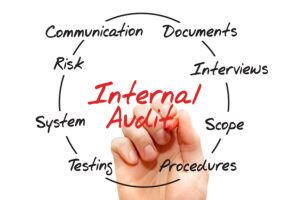What is Quality Management System

A quality management system (QMS) is a collection of business processes which focused on consistently meeting customer requirements and enhancing their satisfaction. It fits into the scope and strategic direction of an organization. It also expresses itself as organizational goals.
There are many organizations that are striving to assess the methods & ways in which their overall productivity, the quality of their products & services & required operations to achieve them are done.
The ISO 9000 family of Quality Management System (QMS) is a set of standards that helps Organizations to ensure they meet customers and other stakeholder needs within statutory and regulatory requirements related to a product or service.
The International Organization for Standardization (9001:2015) series describes standards for a QMS addressing the principles & processes i.e. design & development and delivery of a Product or service.
This is 5th edition of this standard.
Historical Background
Previous items were made by individual / team from start to end. Mass production brought huge teams of people together to work on specific stages of production where one person would not necessarily complete a product from start to finish. Some pioneers have recognized the limitations of the methods being used in mass production at the time and the subsequent varying quality of output. Birland established Quality Departments to oversee the quality of production and rectifying of errors, and Henry Ford emphasized standardization of design and component standards to ensure a standard product was produced. Management of quality was the responsibility of the Quality department and was implemented by Inspection of product output to ‘catch’ defects.
The ISO 9000 series are based on seven quality management principles (QMP)
1 — Customer focus
2 — Leadership
3 – Engagement of people
4 – Process approach
5 – Improvement (Check the link)
6 – Evidence-based decision making
7 – Relationship management
https://en.wikipedia.org/wiki/ISO_9000
Processes
- Order Process
- Production Plan
- Product / Process or Service measurements to comply with specific requirements
- Design & Development
- Calibration of the Instruments & Machines
- Internal Audits / External Audits / Supplier Audits
- Corrective Actions
- Risk & Opportunities of the process
- identification, labeling
- Control of non conforming products to prevent its inadvertent use, delivery or processing
- Purchase procedures, like provider selection, tracking of results
| Plan (Planning / Road Maps / Timeline) | Do (Implementation / Records) |
| Act (Immediate & Corrective Action) | Check ( Checklist / Analysis) |
Content of ISO 9001:2015
- Scope
- Normative References
- Terms and Definitions
- Context of the organization
- Leadership
- Planning
- Support
- Operation
- Performance evaluation
- Continual Improvement
Auditing Process

Two types of auditing are required to become registered to the standard: 1) auditing by an external certification body (external audit) and 2) audits by internal staff trained for this process (internal audits). The aim is a continual process of review and assessment to verify that the system is working as it is supposed to, to find out where it can improve, and to correct or prevent identified problems.
Advantages of QMS
- Proper quality management can improve business, often having a positive effect on investment, market share, sales growth, sales margins, competitive advantage, and avoidance of litigation.
- Benefits ranging from registration required to remain part of a supply base, better documentation, to cost benefits, and improved involvement and communication with management. https://en.wikipedia.org/wiki/Quality_management_system
FOR MORE LEARNING CHECK THIS VIDEO, CLICK ON THE BELOW LINK
 https://www.youtube.com/watch?v=31AsXiL3FtU
https://www.youtube.com/watch?v=31AsXiL3FtU
Certification
- The International Organization for Standardization (ISO) does not certify organizations itself. Numerous certification bodies exist, which audit organizations and upon success, issue ISO 9001 compliance certificates.
- Many countries have formed Accreditation bodies to authorize (“accredit”) the certification bodies. Both the accreditation bodies, certification bodies charge fees for their services!
- An organization applying for ISO 9001 certification is audited based on an extensive sample of its sites, functions, products, services, and processes. The auditor presents a list of problems (defined as “nonconformities”, “observations”, or “opportunities for improvement”) to management.
- An ISO 9001 certificate is not a one time award, it must be renewed, at regular intervals recommended by the certification body i.e every three years.
Which top most countries are using the ISO 9001
- India
- Germany
- Italy
- Japan
- United Kingdom
- Spain
- United States
- France
- Australia
- Russian Federation
- Korea
- China
Criticisms of ISO 9001 certification
A common criticism of ISO 9000 and 9001 is the amount of money, time, and paperwork required for a complete implementation and 9001 certification.
Certifications are in fact often based on customer contractual requirements rather than a desire to actually improve quality.”If you just want the certificate on the wall, chances are you will create a paper system that doesn’t have much to do with the way you actually run your business.”
Limitations
- Commitment of senior management to monitor, control, and improve quality. Organizations that implement an ISO system without this desire and commitment often take the cheapest road to get a certificate on the wall and ignore problem areas uncovered in the audits.
- Many organizations that implement ISO try to make their system fit into a cookie-cutter quality manual instead of creating a manual that documents existing practices and only adds new processes to meet the ISO standard when necessary.
- An ISO system should take into account all areas of the customer experience and the industry expectations, and seek to improve them on a continual basis. This means taking into account all processes that deal with the three stakeholders (customers, suppliers, and organization). Only then can a company sustain improvements in the customer’s experience.
- Many auditors simply rely on submitting reports that indicate compliance or non-compliance with the appropriate section of the standard; however, to most executives, this is like speaking a foreign language. Auditors that can clearly identify and communicate areas for improvement in language and terms executive management understands facilitate action on improvement initiatives by the companies they audit. When management doesn’t understand why they were non-compliant and the business implications associated with non-compliance, they simply ignore the reports and focus on what they do understand.





